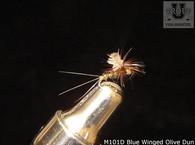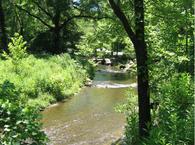
We at Trout University have the privilege of co-linking with Flyfishingnc.com and since I have written about stoneflies for the summer, I decided to see what Flyfishingnc.com had to say about the subject. Answer: Plenty, so here is a reprint from flyfishingnc.com.
The Order Plecoptera, known as the Stone fly. The stoneflies are terrestrial as adults, but in the nymphal stages they are strictly aquatic, and most are restricted to flowing waters of relatively high oxygen concentrations due to their gills. That is why they are usually found in faster moving water.
Fertile eggs are laid over or in the water and requite two to three weeks for hatching in many species, and several months among some larger forms. The nymphal instars, from 10 to over 30 moltings, occur in one to three years. Adults live from 1 to 4 weeks. Most adults are winged, although a few species are wingless or have short wings. The adults do not fly well and this has prevented them from crossing even small geographical barriers.
Temperate species that over winter as nymphs often do not stop growing even in water temperatures close to 0°C. It seems that it is warm water temperatures rather than cold ones that punctuate stonefly life cycles. The ability to spend the summer in stasis enables some species to live in temporary streams.
Generally, stonefly nymphs are either shredders or predators. Some groups that are predaceous as late instars have been reported to be herbivorous or detritivorous in early instars, while late instars of large detritivores may consume some prey. Predators are engulfers, that is, they swallow their prey whole or bite off and swallow parts of prey. They are active search or pursuit predators, using their long filamentous antennae to locate prey using tactile, wave disturbance, and chemical cues. Many species are opportunistic feeders, consuming prey in proportion to their relative abundance. Other species are selective for prey species or sizes. In some families adults feed, and in others they do not. Most species appear to emerge at night and generally the males start to emerge before the females though there is considerable overlap. It is thought that both temperature and photoperiod are important in determining emergence times.
By the way, stop over to the Flyfishingnc.com web site for more fly fishing information as they share the same interests as Trout University. Thanks tony for sharing this information.





